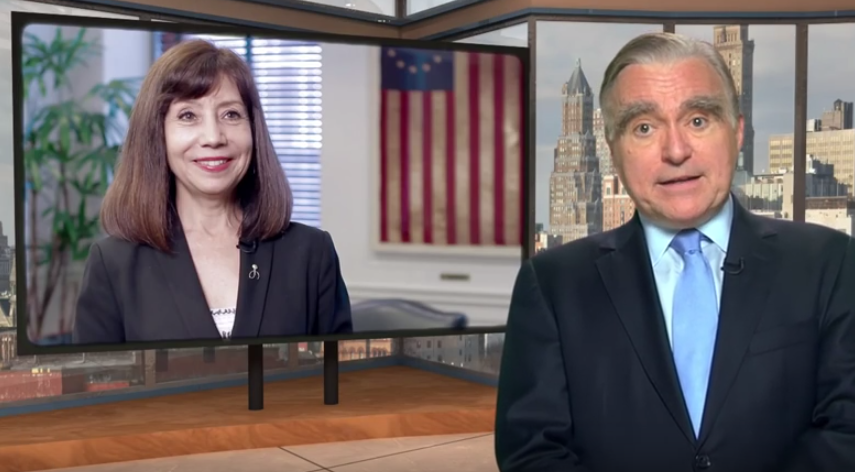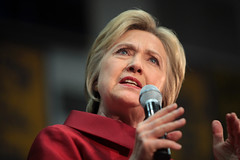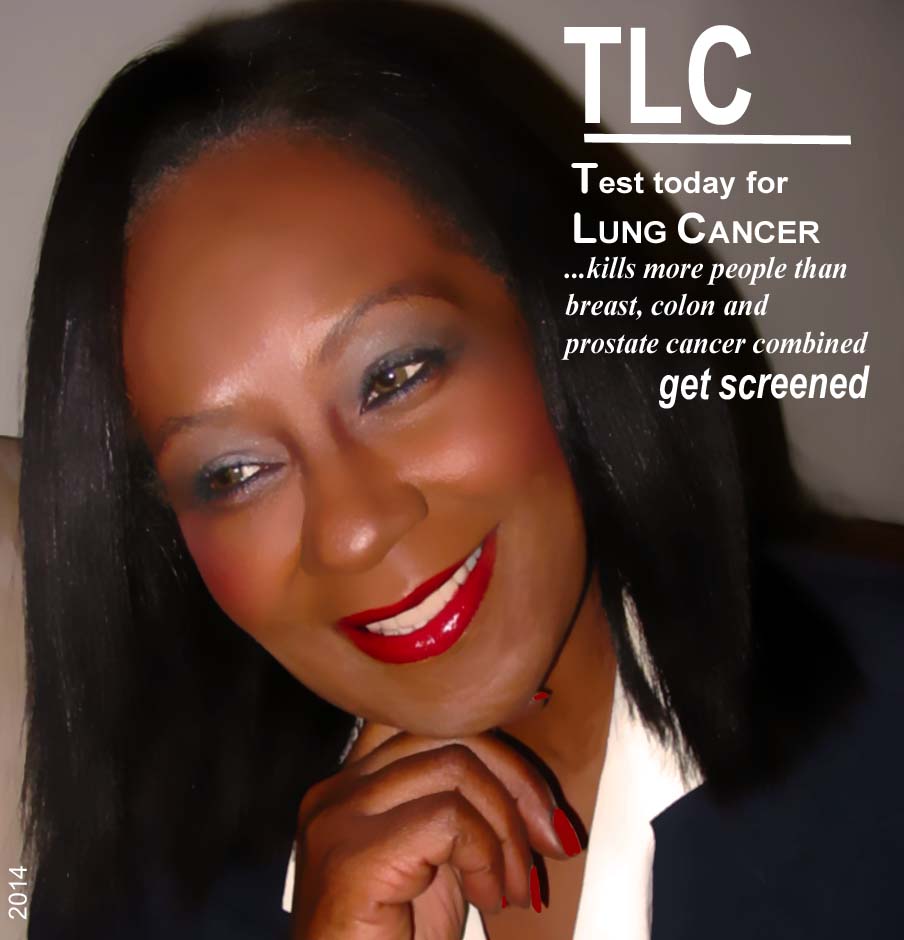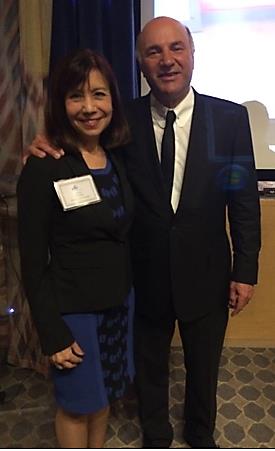When it comes to communication, the meta message is in the tone and not in the words. Uptalk communicates a lack of conviction and confidence and can taint a public speaker's brand.
10 Tips for Radical Panel Presentations
Joel Osteen's Hands Betrayed Him
What do gestures tell us about a public speaker? We learned a lot about Joel Osteen's gestures during his interview about his response to the hurricane. Hurricane Harvey wreaked havoc on the city of Houston which is the 4th largest city in the country. There was extensive flooding requiring people to be evacuated by rescue workers and helicopters. Thousands of people were in search of shelter and could not return to their homes.
The question people wanted to know was Why didn't Pastor Joel Osteen open Lakewood Church to the people of Houston? The Compaq Center has the capacity to hold 16,285 people. After much criticism on social media, the center accepted hurricane victims on Tuesday.
When Joel was interviewed by CBS TV he explained that he didn't open his center as a shelter because he was not asked by the city. He further explained that the best places for shelter were where there were already resources, supplies, and personnel on the ground. It didn't sound convincing on the surface. But he still could have salvaged his reputation by admitting the mistake and being remorseful. Instead, he pivoted to his message points and gave what seemed to be a presentation. His hands were the giveaway. He used the same wide-sweeping gestures that are part of his signature style when he is on the main stage in front of thousands of people. The CBS interview was directed to three journalists (although it was broadcast to millions of viewers). In media interviews and conversations, people gesture more naturally with their hands closer to their body.
While using wider gestures may be part of the pastor's style, it gave the impression of formality rather than intimacy and sincerity. That is not to say he was dishonest. I'll leave that to the top body language experts. The point is this. To appear sincere, your body language needs to be relaxed and appropriate to the situation. Wide gestures work well in a stadium but seem exaggerated when communicating on a television show or satellite interview. For crisis communication to be effective, it's imperative to plan your delivery as well as your message points.
For more tips visit https://www.facebook.com/direstacommunications
Don't Let Others Eclipse Your Presentation
How to Give a Pep Talk
Words are powerful and when delivered with emotion they can move the masses. But until recently, pep talks were "seat of the pants" types of presentations.
Creating Fireworks on Stage
Losing Your Train-of-Thought
When the Audience is the Bully
I remember my first corporate consulting assignment. I landed a multi national bank who hired me to train 70 MBAs in their credit training program. After developing the curriculum, the day finally arrived when I was to deliver the writing and presentation skills seminar. I was feeling excited and a little anxious.
Tell Your Story in Less Time
How often have you heard a public speaker or presenter dominate a conversation not because the story was so interesting but because the speaker was disorganized?
Make Your Audience Fall in Love With You
You step up and turn to face your audience. You feel a lump in your throat. You’re about to speak your first words. What if they don’t like you? You silently pray, "Show me the love." Fear of rejection is one of the reasons people avoid public speaking. But it doesn’t have to be that way. You can make yourself attractive to the audience without being a seasoned pro. Here are a few simple tips to make your audience fall in love with you.
No Sweat! Get Control of Public Speaking Nerves
Three people called me this week because their public speaking fear is holding them back. It's affecting their brand, their reputation, and their career advancement. It's causing them to remain quiet in meetings and to decline speaking opportunities. It’s time to knock out the fear of public speaking! Public speaking is no different from any other fear and you can kick the habit long before you kick the bucket.
What Donald, Hillary, and Bernie Taught Us About Presentations
 This U.S. presidential election was like no other. Hillary Clinton and Donald Trump went head-to-head in a heated debate with more twists and turns than a roller coaster ride. The ongoing soap opera kept people riveted to their screens -- sometimes inspired and other times disgusted. Regardless of the outcome, there were lessons learned about public speaking.
This U.S. presidential election was like no other. Hillary Clinton and Donald Trump went head-to-head in a heated debate with more twists and turns than a roller coaster ride. The ongoing soap opera kept people riveted to their screens -- sometimes inspired and other times disgusted. Regardless of the outcome, there were lessons learned about public speaking.
Here some presidential guidelines to deliver winning presentations:
Deliver a Message that Resonates -- To be effective in any presentation, a public speaker must have a message that resonates with the audience. While sizzle is important, if the message doesn’t speak directly to the self interests of the audience, it won’t be remembered and it won’t move the crowd.
Both Sanders and Trump leveraged the emotions of the audience and spoke directly and specifically to their frustrations, problems, and concerns. To resonate with an audience the presenter needs to speak simply, use shorter words, and to tell stories that relate to what the audience believes and experiences. When the presenter speaks their language, the audience feels heard, understood, and connected. And that builds trust.
Smile and Deflect -- At some point every public speaker will encounter resistance or hostility. The worst approach is to get defensive. When you play your opponent’s game, you lose. The debates got nasty at times. When Trump attacked Hillary, she reacted by smiling until it was her turn to rebut. Hillary showed poise under pressure. In situations other than a debate, the presenter can involve the audience to deflect hostility. There’s nothing more powerful than peer pressure.
Do the Unexpected -- Attention spans are growing shorter. There’s now research that states that the attention of a goldfish is one second longer than that of a human. Yikes! To keep an audience engaged and attentive, be different.
Trump broke the rules. He was unpredictable and said things that were politically incorrect. The audience found it refreshing because he said what they were thinking. When presenters avoid naming the elephant in the room, the audience retreats and resists. It’s difficult to be influential if you tiptoe around the truth. (Yes, he went too far, and lost credibility for being inappropriate to say the least). When used appropriately, the element of surprise will keep the audience with you.
Get Personal -- All three candidates showed a personal side of themselves by involving their family and sharing stories. Every audience is thinking three things subliminally -- Who are you? Who are you to tell me? What’s in it for me?
An audience first wants to know the presenter as a person, not as a talking head. Sharing personal stories and talking about one’s family humanizes the speaker. Substance without personal connection will not yield results. An audience relates to people they know, like, and trust. Never underestimate the likability factor.
Be Gracious Victory and Defeat -- Sometimes you win, sometimes you lose. It’s true in politics, sports, and at work. A gloating winner or a sore loser will cast themselves in a negative light. What separates the ordinary from the great is how a presenter handles victory and defeat. When Donald won the election, he complimented Hillary on her toughness, hard work, and service. Bernie and Hillary were gracious when they conceded the election. Hillary’s concession speech inspired the country to unite and paved the way for a new administration. This is truly the mark of leadership.
Most of us will never run for office but we can take a page out of the election playbook and remember to apply the good, and eliminate the bad and the ugly.
Press Release: Diane DiResta Interviewed for C-Suite TV
Press Release: Diane DiResta Gives a Knockout Interview on WABC Radio
Diane DiResta, CSP, was interviewed by Yitzchok Saftlas, host of Mind Your Business on 77WABC radio, during the C-Suite conference at the NY Times building, in New York City. DiResta stated that, “Speaking is a leadership skill and is the new competitive advantage. You can no longer be without this skill.”
15 Tips to Master Video Presentations
 What do today's business presenters have in common with television anchors? They both have broadcasting skills. With youtube being the number two search engine and companies demanding online learning, public speaking has gone digital. According to Business Insider 2014, “About 50 million people in the U.S. now watch video on their mobile phone." Public speakers who shun the camera will be left behind.
The first step to being a master presenter is to understand the difference between in- person speaking versus video presentations. Here are a few tips for speaking in a digital media world:
What do today's business presenters have in common with television anchors? They both have broadcasting skills. With youtube being the number two search engine and companies demanding online learning, public speaking has gone digital. According to Business Insider 2014, “About 50 million people in the U.S. now watch video on their mobile phone." Public speakers who shun the camera will be left behind.
The first step to being a master presenter is to understand the difference between in- person speaking versus video presentations. Here are a few tips for speaking in a digital media world:
- A video recorded presentation is one way communication. That means you can’t read the audience and pivot in the moment to meet their needs. So it takes a lot of preparation to deliver a compelling message and provide value to your target audience.
- In the case of teleconferencing, appoint a facilitator at each site to manage the technology and to facilitate the meeting. Be aware of delay time and plan for it by practicing longer pauses. Pause and silently count to four. That will allow enough time for the speaker to finish and for the listeners to hear the last word.
- Know the time zone of your audience. It may be 8:00 a.m. in New York, but if it’s 2:00 p.m. in Amsterdam you don’t want to start the meeting with “Good morning”.
- Display a visual agenda. People need a roadmap and it will keep the meeting or presentation focused.
- Have a back-up plan. Be able to continue by telephone if the video fails. It’s a good idea to do a test drive of the technology 15 minutes before the presentation. As a hedge, send the PowerPoint deck in advance.
- Make love to the lens. People don’t know where to look when speaking on skype. When you look directly at the caller, they see you looking down and you lose that eye connection. Try this instead: When speaking to them, look directly at the webcam. When you are listening, look at the caller.It’s uncomfortable speaking to a camera; yet that’s exactly what the presenter needs to do during webcasts and media interviews. In live presentations the presenter feeds off the audience reaction. With video, the presenter imagines the lens is a person. It’s important to maintain a steady gaze. If your eyes are darting you’ll be perceived as nervous or untrustworthy. And practice smiling and talking. Broadcasters do this easily. A serious delivery will weaken the likability factor.
- Video is an energy drain. There is an exchange of energy between a speaker and an audience. When that energy is strong, it’s palpable. That’s not the case with video. As a result, you won’t convey energy the way you do in a live performance. For that reason, you need to pump up your performance on video. In a video the presenter can easily come across as flat. Push your energy higher than normal to have the same intensity level when you’re live and in person.
- Minimize gestures. Wide, sweeping hand movements are distracting on video. Use fewer and smaller gestures. If seated, sit with both feet on the floor and lean forward at a 15 degree angle. Place both hands on the table. This is a confident speaking and listening position. You’ll be perceived as confident and it will stabilize you. Avoid excessive head nodding and jerky movements.
- You are always on stage. If someone else is speaking, chances are you are still in view. Be careful about sloppy behaviors such as slouching, looking at your phone, side talking or looking bored. The presentation isn’t over until the camera is off.
- You’ll look heavier on video. Video is two dimensional which flattens the presenter. I once was videotaping a client for a presentation. It was amazing that when I looked at her directly she appeared slim. When I looked through the camera lens she looked heavier.To manage the widening effect, dress for the camera.Remember that light colors enhance and dark colors diminish. A client of mine was unhappy with her video because she thought she looked heavy. She was wearing a boxy white jacket which gave her a wide appearance. We did a make-over. This time she wore a tapered navy blue jacket which had a slimming effect.Another way to look thinner on video is to stand at a ¾ angle with your hips back. If you’re in a close-up, drop your forehead slightly to avoid a double chin.
- Wear the right colors. White and black are not good colors for video. White creates glare. It’s better to wear off-white or pearl grey. Icy pastel colors look washed out on camera and are not a good choice. Red can bleed or look muddy. A better choice is burgundy. Avoid stripes and large bold patterns. You’ll look like a TV test pattern. When in doubt, blue is a good choice for video. It films well and psychologically blue means trustworthy, conservative, stable.
- Lighting is key. While lighting is important in a live performance, harsh lighting won’t be as damaging. On video, fluorescent lightening will highlight lines and shadows in the face and can also hurt the eyes. Use soft lighting that flatters your face.
- Choose the backdrop carefully. When doing a video presentation always ask about the backdrop. If you’re filming from home, make sure you don’t have messy papers stacked up behind you. If you’re filming off-site, choose clothing that will work with the backdrop. Early in my career I was being filmed for a speaker showcase. I asked the producer if my fuchsia suit would televise well. He said yes. Unfortunately. I asked the wrong question. I should have asked “What color is the backdrop?” When I arrived I found myself in front of an orange curtain. The fuchsia suit bled into the orange and looked terrible on film. This wouldn’t have been an issue in a live presentation.
- You cannot be boring. Engagement is crucial.You have 5-10 seconds to grab attention in a video presentation. The key to success in video presentations is good storytelling and a highly targeted audience who will appreciate the value. Being boring is deadly in any venue. A live audience will show more tolerance by listening longer. If your video presentation is boring the viewer will click off instantly. A video presentation needs to have greater engagement. A measure of engagement, is how many people watch the entire video. According to Industry standards, a 15-20% complete viewing of a 2 minute video is considered a good engagement rate. That means most viewers are not watching the complete video.
- The day of the talking head is over.To increase engagement, keep a fast pace. You need to keep the video moving. Add slides and images while you are speaking. Fly in bullet points as you speak. Keep the presentation brief. If it’s a formal speech aim for no more than 18-20 minutes. Sales presentations need to be crisp, engaging, fast moving, and brief.In my own experiment, I noticed that every time I reached for the fast forward knob, the picture would change. This happened continually as if the videographer was reading my mind. Intrigued, I started to look at the time. The frames were changing every four seconds-the same time I wanted to fast forward.
If you’re not producing video presentations you’re leaving money on the table. Your digital footprint is now an important part of your personal brand. Interviewers are asking for videos. LinkedIn now allows videos to be added to profiles. Video is the ultimate selling tool. It addresses the know, like, trust factor.
Video is not going away. To be current, you need to master video presentations.
What Hillary Clinton Can Teach Us About Using Your Voice
 There’s been talk about Hillary Clinton’s coughing and whether she’s damaging her voice. It made me think of how speakers unknowingly abuse their voices.
Often public speakers yell in order to project. Yelling is not only irritating to listen to, but will cause eventual hoarseness. It causes strain on the vocal folds. Presenters should request a microphone, project from the diaphragm, and not from the neck muscles. And incessant coughing can also cause damage. Coughing causes the vocal folds to forcefully slam together.
There’s been talk about Hillary Clinton’s coughing and whether she’s damaging her voice. It made me think of how speakers unknowingly abuse their voices.
Often public speakers yell in order to project. Yelling is not only irritating to listen to, but will cause eventual hoarseness. It causes strain on the vocal folds. Presenters should request a microphone, project from the diaphragm, and not from the neck muscles. And incessant coughing can also cause damage. Coughing causes the vocal folds to forcefully slam together.
One of the bigger problems for professional and public speakers is laryngopharyngeal reflux, an inflammation near the back part of the larynx due to acid rising to that point. Thirty-five million people in the United States have acid reflux.
“This inflammatory condition causes the vocal folds to function less efficiently leading to vocal fatigue and poor projection,” states Dr. Thomas Murry, clinical director, professor of speech pathology in otolaryngology at the Voice and Swallowing Center of Columbia Presbyterian Medical Center, Columbia University. Reflux is most common among speakers because so many speakers are on the go, stressed and may have poor diets. Being aware of the symptoms of reflux can help speakers take preventative steps to take care of the problem.
The big five symptoms are:
- Vocal fatigue
- Lack of projection
- Hoarseness as the day wears on
- Throat clearing
- Increased phlegm in the throat
Preserving the Voice
To preserve the voice, don’t constantly clear your throat or talk over noise. Instead, Murry recommends the silent cough technique.
The silent cough technique is a way to clear the throat without violently banging the vocal folds together. The silent cough is done by breathing in air and blowing the air out fast through your throat and mouth without making a sound. Immediately after the silent cough, you should tuck your chin down toward your chest and make a strong swallow. The silent cough often clears mucous that clings to the vocal folds or near them. The silent cough is an important element of vocal hygiene and helps to prevent unnecessary trauma to the vocal folds. It is especially important to use the silent cough after surgery to the vocal folds.
If the symptoms of reflux continue, go to the doctor before the problem becomes severe.
Another common physical voice problem is vocal paresis, a weakness in one or both vocal muscles manifesting in breathiness or fatigue. Both folds must come together symmetrically to produce a clear, resonant voice. Vocal paresis can be caused by a flu or viral infection. When the nerve is inflamed, the condition can last for six months to a year, causing the speaker to change habits to adjust to the inflammation. A monotone may be an indicator of a minor defect or partial paralysis. Also, public speakers who have difficulty projecting could have some vocal fold asymmetry. Tape yourself and listen to how you sound. Also, be aware if you find people asking you to talk louder. This may be an indication that you are suffering from vocal paresis.
Breathiness and Hoarseness
Women are more inclined to get polyps or nodules, which are growths that prevent complete closure of the vocal folds and create breathiness. “In females, the back part of the vocal folds never completely closes due to the way they are formed. So the female voice is always going to be a little bit more breathy than the male’s because of anatomy,” states Murry.
If you are suffering from breathiness, take action and get checked out. It is always better to be safe than sorry. The definition of the term “frustrated and feeling sorry for yourself" is to wake up to find that you’re hoarse when you have a big speaking engagement.
When hoarseness is the problem, first determine that there is no hemorrhage. Then start a process of hydration and steam. Public speakers should travel with a facial steamer. When staying in a dry hotel room, opera singers use them every hour for five minutes. Alternatively, you can make boiling water in your coffee pot, pour it into the ice bucket, and throw a towel over your head to reap the benefits of steam.
To avoid becoming hoarse, avoid alcohol, chocolate and caffeine before a speech. They will dehydrate the mucous membranes, causing hoarseness. Finally, after an all-day motivational program, get plenty of rest and drink lots of water. Before you climb into bed, toss out those mint chocolates on your pillow; they are a double whammy because the mint relaxes the lower esophagus and allows acid to come up.
Making a difference in the lives of your audience is done with your instrument—your voice. With proper breathing, voice training and vocal hygiene, your voice will be strong, healthy and you’ll master true vocal power.
How to Give a Eulogy When You're Not a Public Speaker
 What do you do when a loved one dies and you're the person to give the eulogy? Last weekend I attended the memorial service of my friend, Linda who lost her battle to lung cancer at the age of 63.
Memorial services are usually bittersweet. The service was beautifully inspiring and sad at the same time. The tributes from her sorority sisters gave an insight into her personality and the reader of her legacy left a powerful impression of Linda's contribution of the world. The soloist sang Linda's favorite song with feeling and his voice filled up the room with love.
What do you do when a loved one dies and you're the person to give the eulogy? Last weekend I attended the memorial service of my friend, Linda who lost her battle to lung cancer at the age of 63.
Memorial services are usually bittersweet. The service was beautifully inspiring and sad at the same time. The tributes from her sorority sisters gave an insight into her personality and the reader of her legacy left a powerful impression of Linda's contribution of the world. The soloist sang Linda's favorite song with feeling and his voice filled up the room with love.
The preacher read a passage from the Bible and eloquently spoke about Job, He told us that we had not lost anything. That Linda had been given to us as a gift and we shared that gift for 63 years. His sermon and his delivery were inspiring, uplifting, and impassioned.
While the preacher was a trained public speaker, the day may come when you are tapped to give the eulogy. You don't have to be experienced in public speaking to be effective. Here are six tips to remember when memorializing a loved one's life:
Develop a Time Line. If you don;t know where to begin, draw a horizontal line on your paper and mark down significant events or memories. It can be in 5 or 10 year intervals or any time frame that works.
Discover a Theme. Once you look at the timeline, you may see trends or stories that can be folded into a them. Ex. You always did it your way. You always went the extra mile.
Sequence your Ideas.Next, organize the most important and meaningful events and stories in a sequence that flows and is easy to follow. Don't give a biography of the person's entire life. Keep it brief.
Keep it Positive. Don't dwell on the failings or negative times unless it culminates in a story of the hero's journey. Interjecting humor can help lighten the atmosphere.Talk about the deceased in a positive light but do be genuine. What contributions did the departed make? How did the loved one make people feel? How would that person want to be remembered?
Speak from the Heart. It's fine to use a script or notes, however; tell stories. Don't sound like you're reading a text. If you knew the person, share your experience. Relive the moments and events and give people a sense of the person. And it's okay to cry. Have people nearby and take a minute to compose yourself and continue. The audience will understand.
Bury your Fear. Put your focus on telling the person's story and not on your nervousness.Jerry Seinfeld said it best when he quipped, "Most people would rather be in the casket than giving the eulogy." Remember it's not about you.It's about them.
Public Speaking is Going to the Dogs
 It's the Dog Days of August and public speaking is going to the dogs - in a good way. Animals, especially dogs, have been used in pet therapy programs for years. Research shows that pets can help lower blood pressure, and reduce anxiety. Bonnie Auslander, who specializes in business communication, decided to use dogs to help reduce public speaking anxiety in front of an audience.
Knowing that dogs are successfully used in pet therapy, Auslander applied the idea to speaking anxiety. The sessions were part of a pilot program at American University. They recruited 12 canines who were chosen for their calm personalities. Nervous business students were paired with a friendly dog.
It's the Dog Days of August and public speaking is going to the dogs - in a good way. Animals, especially dogs, have been used in pet therapy programs for years. Research shows that pets can help lower blood pressure, and reduce anxiety. Bonnie Auslander, who specializes in business communication, decided to use dogs to help reduce public speaking anxiety in front of an audience.
Knowing that dogs are successfully used in pet therapy, Auslander applied the idea to speaking anxiety. The sessions were part of a pilot program at American University. They recruited 12 canines who were chosen for their calm personalities. Nervous business students were paired with a friendly dog.
Did it work? The evidence was anecdotal. The students reported that looking at dogs made them smile.
True confession: When I was starting out as a public speaker, I would place stuffed animals in chairs and would practice my speech as well as my eye contact. The only downside was when my husband walked into the room and saw me talking to a bunch of chairs.
The idea was to mentally remove the negative image of a scary audience and to replace it with something or someone who is accepting.
While we don't know if this experiment in reducing speech anxiety will transfer to a human audience, it can't hurt. The dogs allow the public speakers to "feel the love", and it's a win win. The public speaker reduces anxiety and the canines get undivided attention.
So I guess it's true. Every dog has it's day.
Public Speaking in Soundbites
Are you able to get to the point? Do you know how to speak in soundbites? Speaking in soundbites help your message land. I created a video book of public speaking soundbites from a recent presentation:
How many times have you heard a presentation only to have your eyes glaze over? The speaker takes too long to get to the point and your brain simply shuts off. Overtalking is deadly when trying to get approval for an idea or when selling your product or service.
And it happens in networking meetings.People deliver a verbal resume instead of an elevator pitch. By the time it's the last person's turn it's time to go home. What many people don't understand about public speaking and clarity is that less is more. Some public speakers give so much detail that the listeners need a machete to cut through all the verbal weeds. To avoid going down a rabbit hole and losing your audience forever, try speaking in soundbites instead.
A soundbite is a short sentence or phrase that is easy to remember. I media train clients who have television interviews to speak in soundbites.The goal of a media interview is to provide "quotable quotes" that contain your message points. Soundbites make the message memorable.
Contrast these two messages:
"You need to learn to be a better speaker because you'll have to go on interviews and sell your ideas and there is a lot of competition and it will be harder to get the job or get promoted if other people speak better and you don't sound confident or clear, or concise so you should practice or take classes so you're not left behind."
"Speaking is the new competitive advantage"
Which do you remember? Which can you repeat?
So when it comes to communication and making the message land, Less is More.
What's your favorite sound bite? Comment below.
Speaking Lessons from Shark Tank
 Last month I had the good fortune to hear Kevin O’Leary of Shark Tank speak at a networking event. Unlike typical celebrity events, this venue was intimate, allowing contact with Mr O’Leary and even a photo opp.
After drinks and hors d’oeuvres, we gathered into a small theater-like room to hear him speak. His speaking approach surprised me and I found it refreshing. Instead of the usual PowerPoint, or main stage podium presentation, Mr O’Leary entered the room in an unassuming manner yet strongly communicated executive presence. After being introduced, he stood next to a leather chair, his only prop a wine glass in hand as he told his story.
Last month I had the good fortune to hear Kevin O’Leary of Shark Tank speak at a networking event. Unlike typical celebrity events, this venue was intimate, allowing contact with Mr O’Leary and even a photo opp.
After drinks and hors d’oeuvres, we gathered into a small theater-like room to hear him speak. His speaking approach surprised me and I found it refreshing. Instead of the usual PowerPoint, or main stage podium presentation, Mr O’Leary entered the room in an unassuming manner yet strongly communicated executive presence. After being introduced, he stood next to a leather chair, his only prop a wine glass in hand as he told his story.
He began by telling us about his mother’s influence on how he thinks about his investments today and took us on a journey from his early, hungry years, the “tough love” lessons from his mother, and how he is raising his children based on his own upbringing. He discussed the issue of how to stay grounded after acquiring riches, his decisions and relationships on Shark Tank, his current enterprises, and advice for today’s entrepreneurs. His decisions to do business with partners isn’t contingent on liking them and he was clear about separating personal feelings from business.
Politics was not part of the presentation until the last questioner asked for his opinion on the Presidential election which he answered directly. Ever the salesman, he ended with a call to action. He let the audience know that he owned a vineyard and we could buy his $60 red wine for $10 on QVC.
Mr. O’Leary didn’t miss a beat. He spoke fluently, conversationally, and matter-of-factly, as he wove sage advice through his stories. This was not a speech but a conversation. And the audience loved it! It was interesting how much of the presentation I retained because he made the message memorable.
What I learned was this: The best public speakers stay true to themselves. Kevin O’Leary has a quiet style but was no less captivating than a Tony Robbins. He told his personal story and made a connection with the audience. By sharing business successes and an inside view of SharkTank, he provided real value to an audience of entrepreneurs. He didn’t waffle when asked a political question. He put a stake in the ground. And of course, he told us how to get a discount on his wine. The audience was captivated. And that’s why he’s called Mr.Wonderful.






